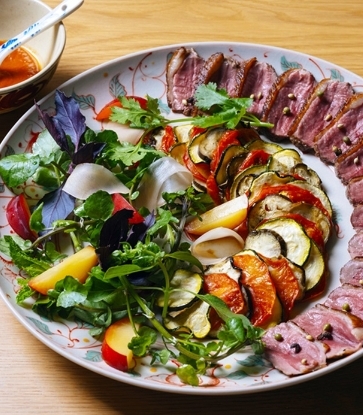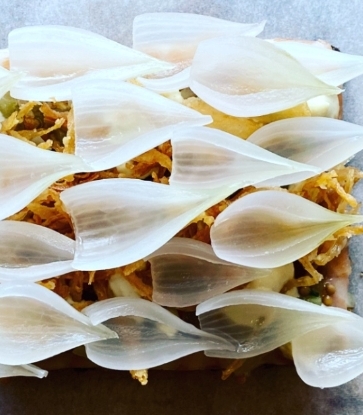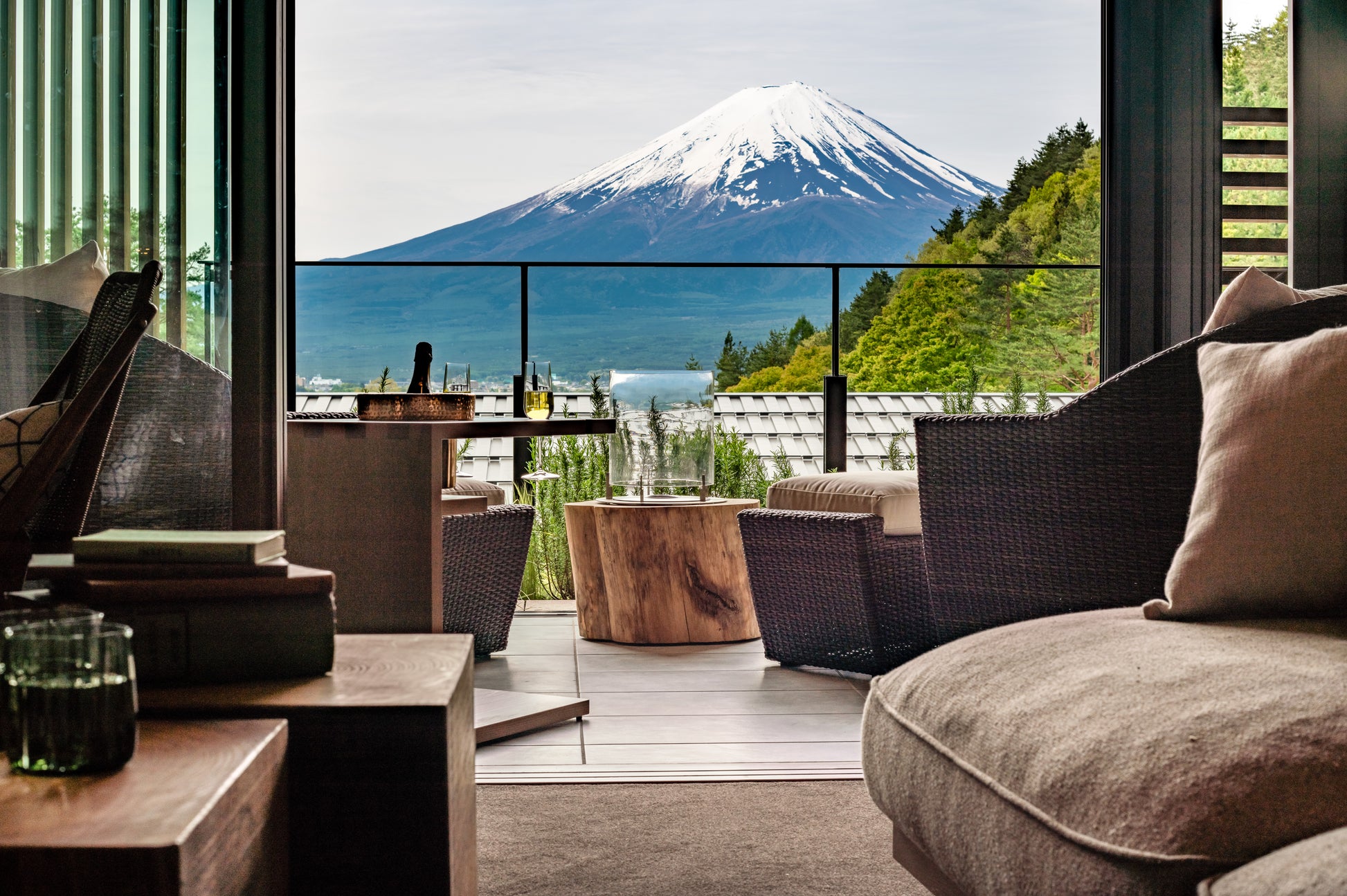Discreetly tucked away on the 38th floor of the Mandarin Oriental Tokyo hotel are nine seats surrounding a soft, sanded-down sushi counter made from a 350-year-old Hinoki cypress tree. The chairs, as well as the lattice screen upon entry, were crafted by the renowned kumiko woodworker Nobuo Tanihata. Little else adorns the space besides the enormous minimalist artwork behind the counter made by famed mud-wall artisan Syuhei Hasado. The jewel-box of a retreat remains understated so that the eye is drawn easily toward the sweeping views across Tokyo. Called Sushi Shin by Miyakawa, it’s the newest omakase restaurant by sushi master Masaaki Miyakawa, which opened this spring. Miyakawa’s namesake restaurant in Sapporo is just one of five sushi restaurants in Japan to have three MICHELIN stars. The Mandarin Oriental hotel group carries a number of MICHELIN-starred restaurants, and clearly takes its food program very seriously. Together, they’ve opened one of most ambitious sushi restaurants Tokyo has seen in years.
“I am not used to heights,” says the Hokkaido-based Miyakawa about the location high above Tokyo’s tony Nihonbashi district. “So I had to adapt to its floor-to-ceiling views.” In the summer, there are fireworks somewhere in the city almost every night. One waiter tells me that guests often witness multiple shows at once, though we only caught one (for those who don’t know, the Japanese take their firework displays to a soaring, splashy level). Nevertheless, the pyrotechnics, the sprawling city lights, and the unobstructed view of the Tokyo Skytree broadcast tower—the third-tallest structure in the world—do not distract from the food.
Miyakawa enlisted his long-time protégé Kazuo Oguro to helm the counter. “I’ve known chef Ogura for 20 years,” says Miyakawa. “He truly understands not only my culinary style and taste, but the complete package of what I want our customers to experience.” Ogura helped Miyakawa open the first Sushi Shin in the world-class Hokkaido ski town of Niseko. “I train my chefs to concentrate and be in the moment—to focus intensely on the task at hand whether that be crafting the next nigiri or the careful brewing of a batch of shari rice. If you can focus on making the current task perfect, all these moments should add up to an incredible experience for the guests,” says Miyakawa.
As with Miyakawa’s other two restaurants, the menu at the Tokyo outpost features edomae sushi—a style that dates to when Tokyo was called Edo and light preservation techniques were necessary. During my visit, the seasonal summer course of herring and eggplant with miso sauce was one example of edomae. “We apply precise amounts of vinegar to the fish and let it soak for several hours overnight in order to remove the fishy smell from the herring while retaining its pure, fresh flavors,” says Miyakawa. “For the miso and eggplant, we use miso that has a rich flavor and combine it with eggplant that is lush and juicy to make a balanced dish. This too has its roots in the tradition of edomae sushi.”

Other standout dishes of the night included steamed abalone with a creamy liver sauce, which they prepare by boiling the abalone until it comes to a soft yet slightly chewy texture. They then use the same water to enhance the liver sauce. Then there’s the sea urchin risotto—Miyakawa’s signature dish served at all three of his restaurants in all seasons. Presented in a ceramic bowl just slightly larger than a sake cup, it has the saltiness of typical sea urchin, but with only a hint of any fishiness—like an ocean spray rather than low tide. The risotto has touches of citrus and nori sprinkled on top.
A favorite element for Miyakawa is the shari rice he uses to make the sushi, which he says is key to the quality of all nigiri. “I use a traditional rice cooking apparatus and method that involves adding a precise amount of red vinegar to make it the perfect balance and complement to the fish,” he says. And then there are the Japanese tiger prawns, which look particularly feline with their bright-orange striping. It has a light saltiness with the familiar prawn flavor slowly seeping onto the tongue in a subtle, non-aggressive way.
For sourcing ingredients like the strikingly fresh prawns, Miyakawa says all three restaurants—whether in Hokkaido or Tokyo—use the same purveyors. “Most of the products are sourced from Toyosu market in Tokyo. When it comes to sea urchin and salmon roe, those are from Hokkaido for all locations,” he says. While tourists have bemoaned last year’s relocation of central Tokyo‘s historic Tsukiji fish market to the outer Toyoso, it seems to be better for people like Miyakawa, who actually use the market for needs beyond an Instagram selfie. “The suppliers and supply chains remain the same. Toyosu is just larger with improved infrastructure,” he says.
In a city with a dizzying array of sushi options, Sushi Shin by Miyakawa is one that takes omakase, and all its accompanying details, to new heights—both literally and figuratively. “Foreigners and hotel guests have become quite knowledgeable and experienced about sushi and I was surprised by that,” he says. With that, the sommelier keeps guests guessing with a distinguished selection of sake poured into your choice of exquisite, colorful glasses (The same traditional cut glassware—called edo kidiko—can be found next door at the posh Mitsukoshi department store with eye-popping price tags). Miyakawa recognizes that he’s entering a crowded market, but given that Mandarin Oriental has three other restaurants on the premises with MICHELIN recognition, he is confident Sushi Shin will flourish. And it’s not just about the food, but the entire experience. “The view of downtown Tokyo from the restaurant is spectacular, and Tokyo natives and visitors alike enjoy marveling at it,” he says.
Photos courtesy of Sushi Shin by Miyakawa.



















